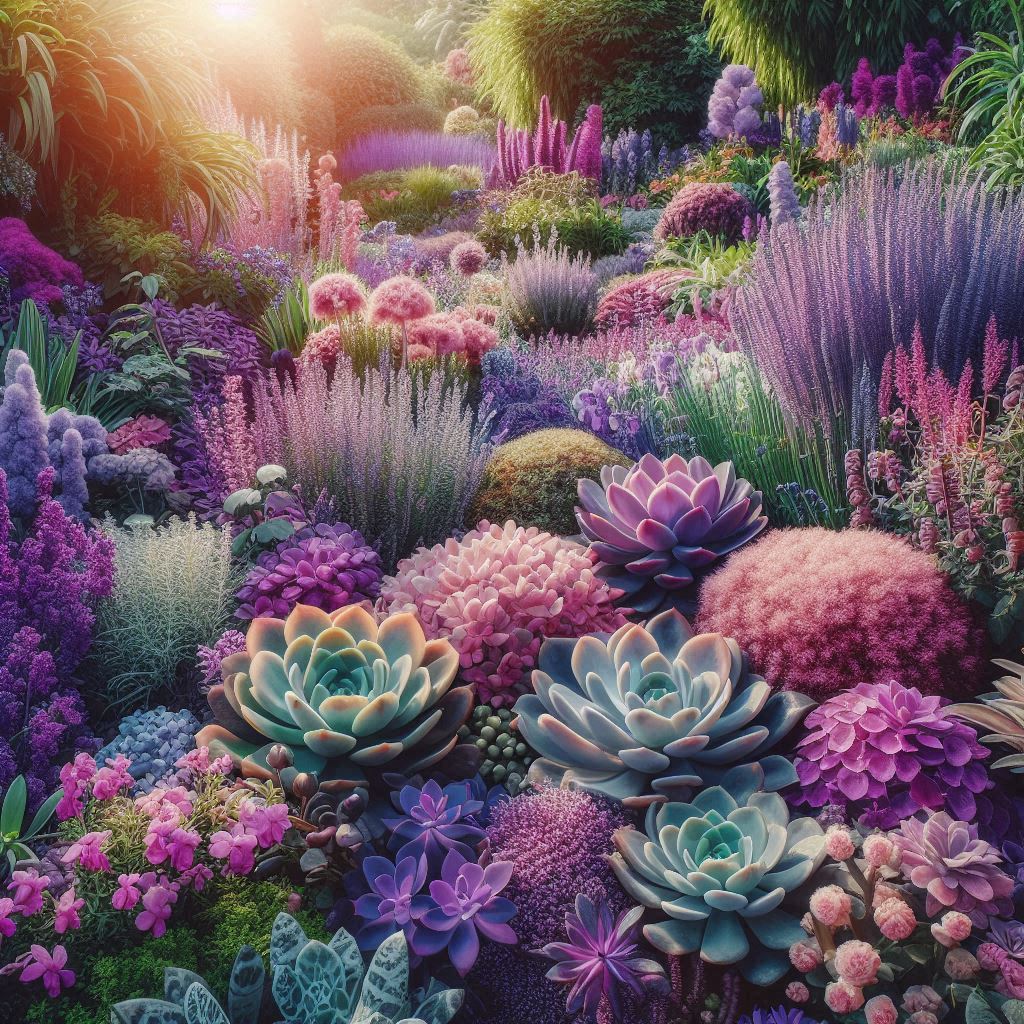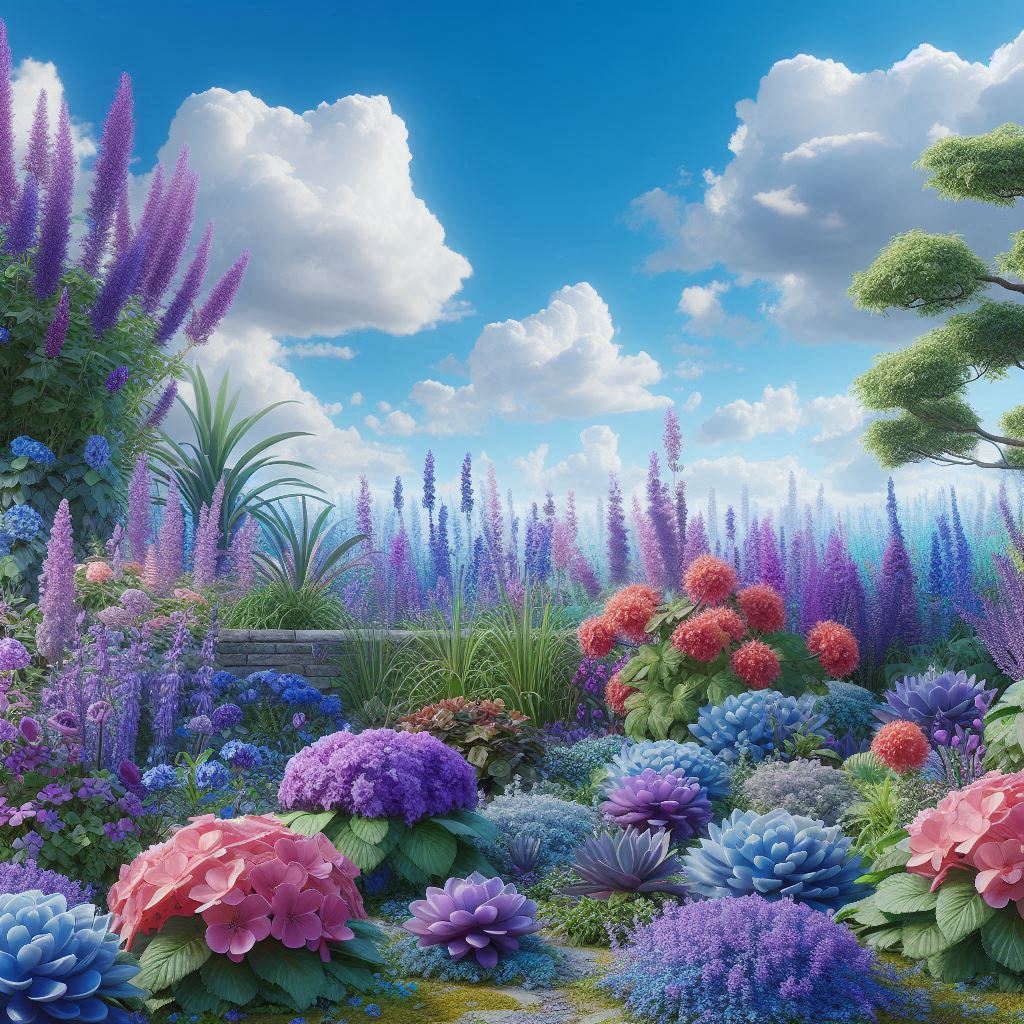Purple plants are nature’s way of adding a touch of royalty and mystery to your garden or indoor space. With their vibrant hues ranging from deep violet to soft lavender, these plants are visually stunning and bring a unique charm to any environment. Whether you’re a seasoned gardener or a beginner, purple plants are a fantastic addition to your collection. In this article, we’ll dive deep into purple plants, exploring their types, care tips, benefits, and more. Plus, we’ll answer some frequently asked questions to help you rank on Google and make the most of your gardening journey.
Why Purple Plants?
Purple is often associated with luxury, creativity, and tranquility. Purple plants can transform any space into a calming and aesthetically pleasing oasis. They’re perfect for:
- Adding a pop of color to your garden.
- Creating a focal point in your indoor decor.
- Attracting pollinators like bees and butterflies.
- Boosting your mood with their soothing shades.
Whether you’re looking for flowering plants, foliage, or succulents, there’s a purple plant for every preference and skill level.

Types of Purple Plants
Here’s a list of some popular purple plants that you can grow indoors or outdoors:
1. Purple Heart (Tradescantia pallida)
This trailing plant is known for its striking purple foliage. It’s low-maintenance and thrives in both indoor and outdoor settings. Perfect for hanging baskets or ground cover.
2. Lavender (Lavandula)
Lavender is a classic purple plant loved for its fragrant flowers and calming properties. It’s ideal for gardens, borders, or even as a dried herb for aromatherapy.
3. Purple Passion Plant (Gynura aurantiaca)
With its velvety purple leaves, this plant is a showstopper. It’s easy to care for and adds a touch of elegance to any room.
4. Purple Basil (Ocimum basilicum)
Not only is purple basil visually appealing, but it’s also a flavorful herb for cooking. Its dark purple leaves make it a unique addition to your herb garden.
5. Ornamental Cabbage (Brassica oleracea)
This cool-season plant features rosettes of purple and green leaves. It’s perfect for adding color to your garden during fall and winter.
6. Purple Coneflower (Echinacea purpurea)
A favorite among pollinators, this perennial plant produces beautiful purple flowers that bloom throughout the summer.
7. Purple Waffle Plant (Hemigraphis alternata)
This small, low-growing plant has textured purple and green leaves. It’s great for terrariums or as a houseplant.
8. African Violet (Saintpaulia)
African violets are popular houseplants known for their delicate purple flowers. They’re easy to care for and bloom year-round.

How to Care for Purple Plants
Caring for purple plants is relatively simple, but each type has its own specific needs. Here are some general tips to keep your purple plants thriving:
1. Light Requirements
Most purple plants prefer bright, indirect light. However, some, like the Purple Heart and Lavender, can tolerate direct sunlight. Make sure to research the specific light needs of your plant.
2. Watering
Overwatering is a common mistake. Allow the soil to dry out slightly between waterings. Plants like lavender and succulents prefer drier conditions, while African violets need consistently moist soil.
3. Soil
Well-draining soil is essential for most purple plants. Adding perlite or sand can improve drainage. For flowering plants like lavender, slightly alkaline soil works best.
4. Fertilizing
Feed your plants with a balanced fertilizer during the growing season. Avoid over-fertilizing, as this can lead to leggy growth or reduced flowering.
5. Pruning
Regular pruning helps maintain the shape and health of your plants. Remove dead leaves and spent flowers to encourage new growth.
6. Pest Control
Keep an eye out for common pests like aphids and spider mites. Use natural remedies like neem oil or insecticidal soap to keep them at bay.

Benefits of Purple Plants
Purple plants offer more than just beauty. Here are some benefits they bring:
- Aesthetic Appeal: Their unique color adds depth and contrast to your garden or home.
- Stress Relief: Studies show that being around plants can reduce stress and improve mental health.
- Air Purification: Many purple plants, like the Purple Waffle Plant, help purify the air by removing toxins.
- Pollinator Attraction: Flowering purple plants like coneflowers and lavender attract bees, butterflies, and other beneficial insects.
- Culinary Uses: Herbs like purple basil add flavor and color to your dishes.
FAQs About Purple Plants
1. Can purple plants grow indoors?
Yes, many purple plants, such as African violets, Purple Passion Plants, and Purple Waffle Plants, thrive indoors. Just ensure they receive adequate light and proper care.
2. Why are some plants purple?
The purple color in plants comes from pigments called anthocyanins. These pigments help protect the plant from harsh sunlight and attract pollinators.
3. Are purple plants harder to grow?
Not necessarily. While some purple plants may have specific care requirements, many are low-maintenance and suitable for beginners.
4. How do I make my purple plants more vibrant?
Ensure your plants receive the right amount of light, water, and nutrients. Pruning and removing dead leaves can also help maintain their vibrant color.
5. Can I grow purple plants in shade?
Some purple plants, like the Purple Waffle Plant, can tolerate shade. However, most prefer bright, indirect light to maintain their color.
6. Are purple plants safe for pets?
While many purple plants are safe, some, like the Purple Passion Plant, can be toxic to pets if ingested. Always check the toxicity of a plant before bringing it home.
Top Products for Growing Purple Plants
To help you get started, here are some affiliate-recommended products:
- Organic Potting Soil: Perfect for ensuring proper drainage and nutrient-rich soil.
- Balanced Liquid Fertilizer: Promotes healthy growth and vibrant colors.
- Neem Oil Spray: A natural solution for pest control.
- Decorative Planters: Enhance the beauty of your purple plants with stylish pots.
- Grow Lights: Ideal for indoor plants that need extra light.
Conclusion
Purple plants are a fantastic way to add color, texture, and life to your garden or home. With their stunning hues and numerous benefits, they’re a must-have for any plant enthusiast. By following the care tips and recommendations in this guide, you’ll be well on your way to creating a vibrant and thriving purple plant collection.
So, why wait? Start exploring the enchanting world of purple plants today and transform your space into a lush, colorful paradise!
